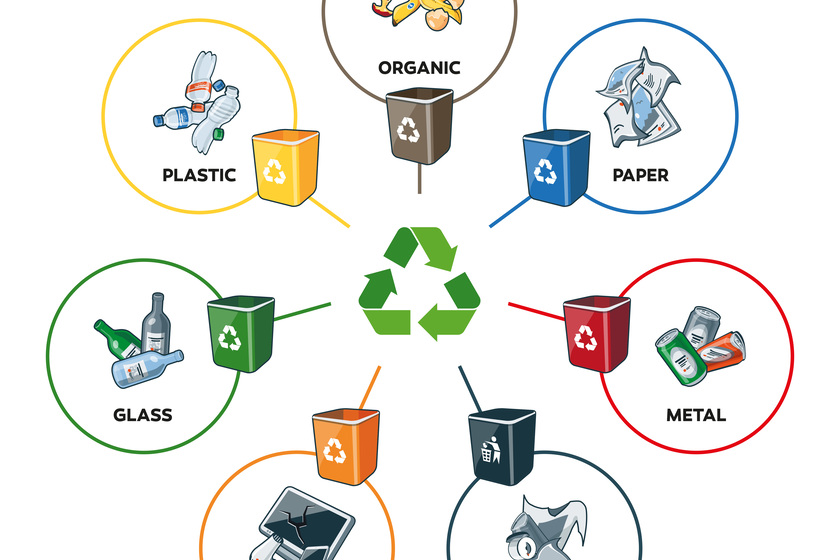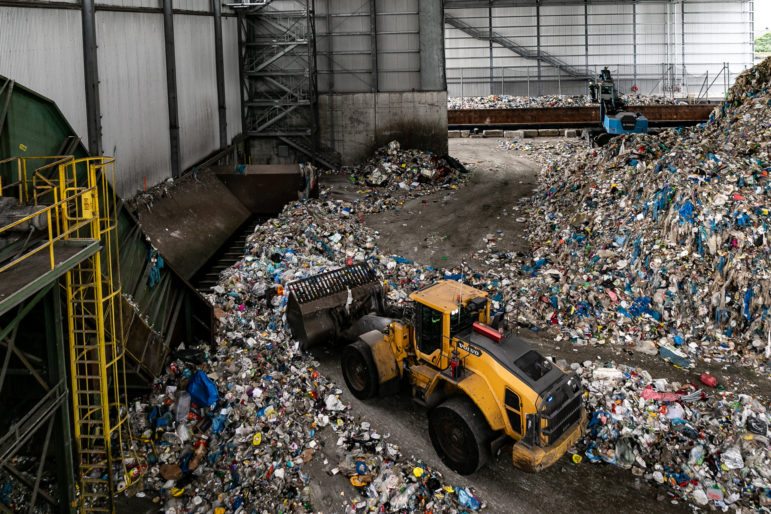Discover the Advantages of Recycling Lives Services for Your Organization
Discover the Advantages of Recycling Lives Services for Your Organization
Blog Article
Understanding the Classification and Handling of Numerous Kinds Of Waste
Efficient waste monitoring is essential for environmental sustainability, calling for a thorough understanding of the classification and handling of different waste types. Household waste, industrial spin-offs, harmful materials, digital refuse, and organic remnants each necessitate unique procedures to guarantee safety and decrease ecological damages.

House Waste
House waste, encompassing a broad array of disposed of products generated from daily living activities, stands for a considerable component of the overall waste stream - recycling lives services. This group consists of natural waste such as food scraps, backyard trimmings, and paper items, along with not natural materials like plastics, metals, and glass. The varied nature of house waste necessitates reliable category and administration to mitigate environmental impact and advertise lasting living techniques
Reliable house waste monitoring starts with segregation at the source, facilitating recycling, composting, and safe disposal. Organic waste, as an example, can be composted to generate nutrient-rich soil changes, lowering land fill worry and enhancing soil wellness. Recyclable products, consisting of paper, glass, and certain plastics, can be refined and repurposed, conserving sources and reducing power intake connected with new product manufacturing.
Moreover, dangerous home waste such as batteries, electronic gadgets, and cleansing chemicals requires specialized taking care of to stop soil and water contamination. Public awareness campaigns and convenient disposal choices play vital roles in ensuring correct disposal and recycling of these materials. By carrying out durable waste reduction methods and cultivating neighborhood engagement, municipalities can considerably alleviate the ecological impact of family waste.
Hazardous Waste
Hazardous waste, a major contributor to worldwide waste generation, encompasses a varied variety of products produced by production, building and construction, and various other commercial tasks. This classification includes byproducts such as scrap steel, plastics, rubber, chemicals, and various other residues. The structure and volume of industrial waste can differ significantly depending upon the industry and production procedures involved. Efficient administration of hazardous waste is essential for reducing ecological effect and promoting lasting techniques.
The handling of hazardous waste normally includes numerous processes: collection, disposal, segregation, and treatment. Collection systems are created to effectively collect waste materials from numerous sources within an industrial procedure. Partition is important, as it makes certain recyclable products are separated from non-recyclable ones, which can be guided towards ideal recycling or disposal channels. Therapy processes, including physical, chemical, and organic techniques, are utilized to reduce the toxicity, volume, and environmental influence of the waste. Finally, disposal approaches like landfilling or incineration are made use of for waste that can not be reused or treated.
Taking on approaches such as waste reduction, resource healing, and recycling can considerably decrease the worry of commercial waste on the setting, contributing to more lasting commercial techniques.
Hazardous Waste

Harsh wastes can harm or destroy living cells and materials. Flammable wastes can conveniently ignite, presenting fire risks, while reactive wastes can trigger explosions or launch hazardous gases upon call with various other materials.
Effective contaminated materials administration includes numerous key techniques: identification and segregation of hazardous materials, secure transportation and storage space, and suitable treatment and disposal. Therapy approaches may include chemical neutralization, stabilization, and incineration. Governing conformity is necessary, guided by frameworks such as the Resource Conservation and Recuperation Act (RCRA) in the United States, which ensures secure and eco sound administration of contaminated materials.
Electronic Waste
Digital waste, typically abbreviated as e-waste, stands for a growing challenge in waste administration due to the rapid obsolescence of innovation. This classification encompasses a broad variety of discarded electronic tools, consisting of smart devices, computers, tvs, and home devices. The intricacy Find Out More of e-waste depends on its composition; these things consist of a combination of beneficial materials such as gold and copper, along with unsafe materials like cadmium, mercury, and lead.

Regulation and laws, such as the European Union's Waste Electronic and electric Equipment (WEEE) Regulation, purpose to advertise responsible e-waste monitoring. These plans mandate producers to assist in the collection and recycling of digital products, thus reducing the concern on land fills and minimizing environmental contamination.
Organic Waste
Organic waste, incorporating eco-friendly products such as food scraps, backyard trimmings, and farming deposits, constitutes a substantial section of the metropolitan solid waste stream. This kind of waste is significant not just for its volume however likewise for its this post potential ecological influence if not managed properly. Organic waste can disintegrate anaerobically in garbage dumps, creating methane, a potent greenhouse gas adding to environment change.
Appropriate handling of natural waste includes a number of methods. Composting is a commonly embraced technique, changing natural materials into beneficial compost that can improve dirt and support sustainable farming. This process additionally minimizes the quantity of waste sent out to land fills. An additional technique is anaerobic food digestion, which damages down raw material in the lack of oxygen, creating biogas that can be used as a renewable power resource. Additionally, diverting food waste from landfills with contribution programs can ease food instability while reducing waste.
Municipalities and businesses are progressively identifying the importance of natural waste administration. Implementing extensive organic waste recycling programs not only mitigates environmental effects yet also lines up with more comprehensive sustainability goals, promoting a round economic climate where sources are constantly recycled and repurposed.
Conclusion
Reliable waste monitoring and ecological defense require a comprehensive understanding of the category and handling of different waste kinds. Implementing suitable methods for each waste type makes sure secure and accountable waste administration techniques, inevitably contributing to the defense of environments and public wellness.
Effective waste monitoring is pivotal for ecological sustainability, calling for an extensive understanding of the classification and handling of different waste visit this page types.Household waste, including a broad range of discarded products generated from day-to-day living tasks, stands for a substantial element of the overall waste stream.Industrial waste, a major factor to worldwide waste generation, incorporates a varied array of materials produced by manufacturing, construction, and various other commercial activities (recycling lives services).Dangerous waste, an important issue in waste administration, comprises products that present considerable risks to human health and wellness and the atmosphere due to their harmful, corrosive, flammable, or reactive homes.Organic waste, including naturally degradable materials such as food scraps, backyard trimmings, and agricultural residues, comprises a substantial section of the municipal solid waste stream
Report this page